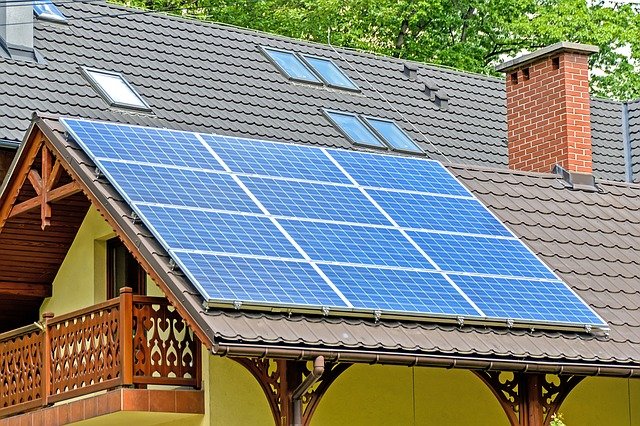
How much is a solar system? How many solar panels do I need? Is my roof big enough? How much will my electric bill be after I have them?
You may have these questions and more when considering a solar system for your home. Solar panels are the foundation of your solar system. For that reason, we want to focus this article on the panels.
How Many Solar Panels Do I Need?
Home solar systems are just as unique as the people who use them. Solar companies consider several characteristics before designing a specific system for your home. The size of your roof, how much energy you use, and your budget are a few.
-
Roof Condition
Solar panels are durable, and they’re made to last decades. They can be removed to accommodate repair or replacement of your roof, but it’s costly. It’s prudent to consider doing the roof work first and then installing panels.
Furthermore, the roof needs to be big enough to accommodate the number of panels you need. For example, a customer who wants a 2,000 kWh per month solar system, needs a rather large roof space.
The large roof space enhances the efficiency of your solar panels, especially if they’re facing southward. Although, it’s not necessary for all panels to be facing that direction.
-
Roof Exposure to Sunlight
Having southward-facing rooftop planes is certainly promising. But there’s more to consider. In fact, trees frequently block the sun from some southward facing rooftops. A solution to tree-obstruction can be fairly simple.
For example, a homeowner can remove the tree or trim it back. However, if they choose to trim it back, they should prepare to maintain the trees annually.
Another consideration should be the potential for future obstruction. Trees and tall buildings may appear over future decades. Check your neighborhood’s building codes to get a better idea of that likelihood.
Without enough sun exposure, the panels may not operate at their optimum levels throughout the year. “Solar access is reduced 13% to 16% by building components and trees within [the homeowner’s] own parcel and less than 2% by buildings and trees from nearby parcels,” says the National Renewable Energy Laboratory.
-
Monthly Energy Consumption
One of the most important components to designing your home solar system is your average monthly energy consumption.
The amount of energy that customers consume per month is measured in kilowatt hours (kWh). One kWh means the use of one kilowatt for one hour.
- Electric company – kWh per month
- Solar panel – kWh per month
Because utility companies measure energy usage in the same units, it’s easy to calculate your monthly energy usage. Find your annual usage according to your electric bill. Then divide it by 12.
-
Average Number of Sunlight Hours in Your Area
Solar panels are meaningless without sunlight. Obviously, if your home is in a cave, solar panels won’t work. But, if you live in a sunny climate, solar panels are quite effective. This is when you’ll be able to enjoy the maximum potential of your solar panels.
For example, Illinois’s average peak sun hours is just over three hours. That can make going solar somewhat tricky. However, going solar is easy for states like New Mexico where they have an average of almost seven peak sun hours.
That doesn’t mean that Illinois residents are out of luck. An efficient solar system depends on the characteristics of each home and its inhabitants. A savvy solar company will make an earnest effort in designing a system that works for your needs.
-
Solar Panel Type
Manufacturers generally use one of three kinds of solar panels. These are monocrystalline, polycrystalline, and thin film. The next question is naturally, “What solar panel do I need for my house?”
All three types have pros and cons. For example, they price monocrystalline panels slightly higher than the others. Although, they look beautiful on your roof and produce the most energy.
Polycrystalline panels are certainly less expensive. However, they don’t produce as much energy as the monocrystalline panels. Finally, thin film panels produce the least amount of energy. But they’re light-weight and portable. Many consumers like the look of thin-film panels on their roofs, as well.
How Many Solar Panels Do I Need for My Home?
So, after all that information, we arrive at the original question again. How many solar panels do I need for my home? Yet, we haven’t come to an answer. That’s because residential solar systems are as unique as the homes they work for.
Solar systems are especially designed for each individual household. So, there is no one-size-fits-all answer. But don’t worry. Consumers don’t have to spend their spare time becoming experts on solar energy to transition to it.
Solar companies design the solar systems for their clients. In fact, solar company representatives will even calculate your average kWh usage for you. All you need to do is provide your energy bill. Furthermore, they obtain permits and do other tasks necessary to transition to solar energy, as well.
If you’re interested in transitioning to solar energy, fill out our contact form. One of our friendly, knowledgeable solar company representatives will be happy to answer your questions. They can certainly help you get started, as well.